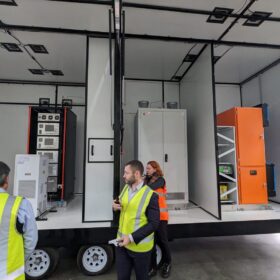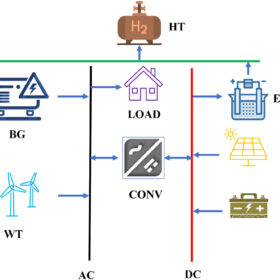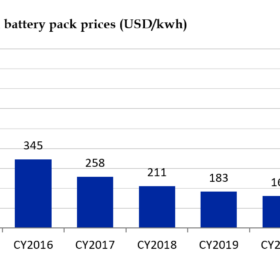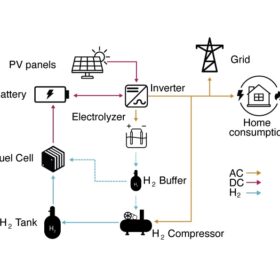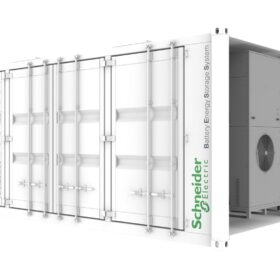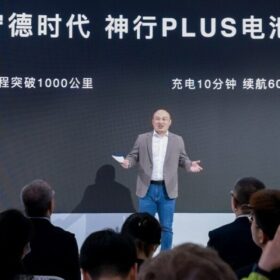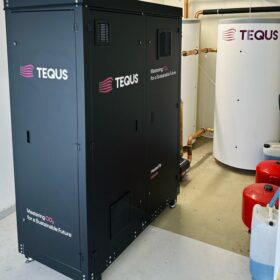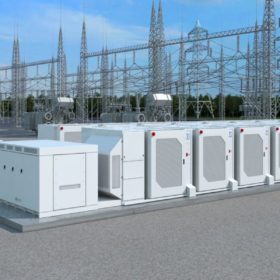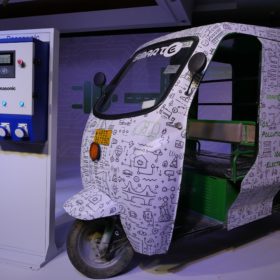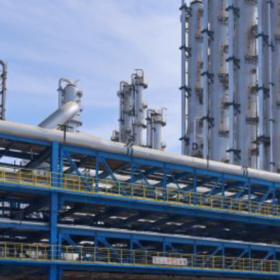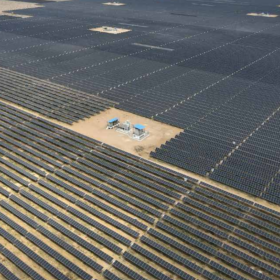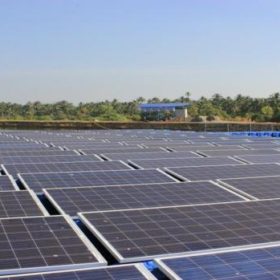Solar-hydrogen solution rolled out for off-grid settings
A new mobile power generator that combines solar and renewable hydrogen to provide zero-emissions power for remote and off-grid applications has been unveiled by Australian startup H2PowerBox.
Designing the best-performing hybrid renewable energy system for off-grid, rural communities in India
A new study evaluates seven different configurations of hybrid renewable energy systems to meet the electricity requirements of an off-grid village community in the Jaisalmer district of Rajasthan, cost-effectively and sustainably. It finds the system combining solar PV panels, wind turbines, biogas generator, lithium-ion battery, converter, electrolyser, and hydrogen tank to be the best performing as it has the lowest fuel consumption rate, net present cost, levelised cost of energy, and cost of hydrogen.
Declining battery costs to boost adoption of battery energy storage projects: ICRA
Battery prices reached an all-time low in 2023 led by the moderation in raw material prices amid the increase in production across the value chain
New model shows how to power homes exclusively with hydrogen, solar, batteries
Researchers in Spain has found that combining PV power generation with fuel cells and battery storage may help homes considerably reduce their levelized cost of energy. Their simulation reportedly demonstrated homes may also become completely self-sufficient.
The Hydrogen Stream: Norway to make world’s biggest hydrogen ships
Norwegian Ship Design Co. has agreed to help build what it claims will be the two largest hydrogen ships in the world, while Norwegian Hydrogen has announced plans to team up with Australia’s Provaris Energy on hydrogen export opportunities.
Schneider Electric launches new storage systems for microgrids
The France-based group said its has released two new BESSs with enclosures of 7ft and 20ft. Their power ranges from 60 kW to 500 kW.
CATL presents EV battery with 1,000 km range
Contemporary Amperex Technology Co. (CATL) has shown its latest lithium iron phosphate (LFP) battery at an auto show in Beijing. The Chinese company says it has an energy density of 205 Wh per kg, almost 8% higher than the current state of the art for such batteries.
Norwegian startup unveils CO2 water-to-water heat pump
Tequs said its new plug-and-play heat pump can deliver up to 90 C of heat for space heating, air conditioning, and domestic hot water. The new product is available in eight versions with capacity ranging from 17 kW to 268 kW.
IEA calls for sixfold expansion of global energy storage capacity
The International Energy Agency (IEA) has issued its first report on the importance of battery energy storage technology in the energy transition. It has found that tripling renewable energy capacity by 2030 would require 1,500 GW of battery storage.
India overtakes China to become world’s largest electric three-wheeler market
Electric three-wheeler (e-3W) sales in India surpassed 580,000 in 2023, compared to 320,000 sold in China.
